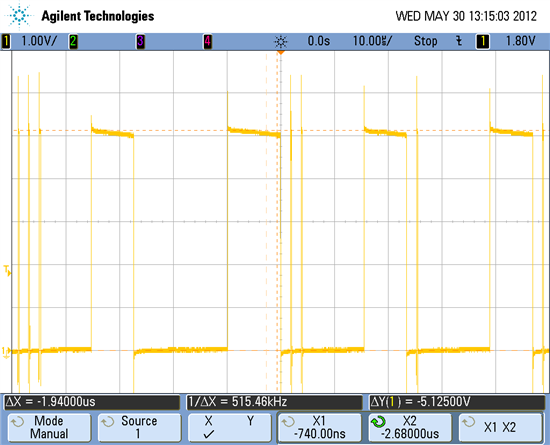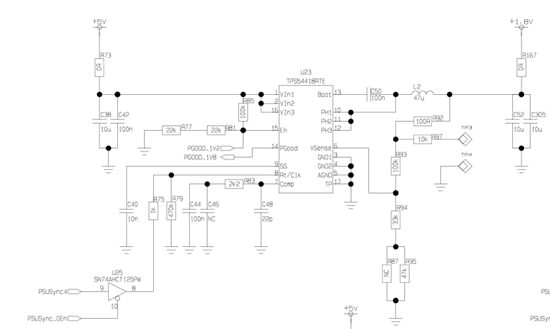Hi,
We are experiencing some issues with the TPS54418RTET on some of our units.
Configuration:
Vin=5V
Vout=1.8V
Load=~40mA
The regulator output voltage is correct, but the duty cycle is somewhat irregular (see figure 1 below).
Figure 1 - Irregular output
This is no problem, however, until a bigger load is switched on (~300mA). The duty cycle changes to a more regular pattern, but in the meantime the output voltage drops by over 10% before settling back to 1.8V after about 1.5ms.
Figure 2 - Duty cycle at higher loads
Can anyone provide an explanation as to what may be the cause of this? Anyone seen this before? I will happily provide more details if needed...
Edit: added the duration of the voltage drop




